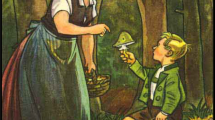Abstract
The study of signs is divided between those scholars who use the Saussurian binary sign (semiology) and those who prefer Charles Peirce's tripartite sign (semiotics). The common view of the opposition between the two types of signs does not take into consideration the methodological conditions of applicability of these two types of signs. This is particularly important in the field of literary studies and hence for the preparation of electronic programs for text analysis. The Peircian sign explicitly entails the discovery of a truth of meaning that claims to be universal and not reducible to a collection of opinions based on fragmented information; it also imposes the task of elucidating a transhistorical and universal significantion encoded in a text. Contrary to Peirce's view of the sign, our use of computer programs for text analysis, however, demonstrates that we implicitly treat every literary text as a set of linguistic data (letters, phonemes, syntagmatic segments, etc.) which are reducible to units that can be treated separately. A brief comparison of the results obtained from computer analyses of the French poet Stéphane Mallarmé's text, “Le Cygne,” with those obtained from two Peircian analyses (by Riffaterre and Champigny) of the same text demonstrates that our current methods of computer textual analysis are based on a Saussurian semiology, which is unidimensional and limited, and that these methods are still quite unable to produce a semiotic interpretation based on a totalizing hierarchy of the text's various discursive components.
Similar content being viewed by others
References
Barthes, Roland. “Rhétorique de l'image.”Communications, 4 (1964), 40–51.
Barthes, Roland.Roland Barthes par Roland Barthes. Paris: Seuil, 1975.
Barthes, Roland.Roland Barthes by Roland Barthes. Transl. Richard Howard. New York: Hill and Wang, 1977.
Barthes, Roland.Système de la mode. Paris: Seuil, 1967.
Baudelaire, Charles. “Le Cygne.” InLes fleurs du mal. Paris: Librairie Générale Française, 1972.
Bonnefoy, Yves. “Dévotion.” InPoèmes. Paris: Mercure de France, 1978.
Bonnefoy, Yves. “Du mouvement et de l'immobilité de Douve.” InPoèmes. Paris: Mercure de France, 1978.
Champigny, Robert.Sense, Antisense, Nonsense. Gainesville: University of Florida Press, 1986.
Deledalle, Gérard.Charles Peirce, écrits sur le signe. Paris: Seuil, 1978.
Derrida, Jacques.Glas. Paris: Galilée, 1974. New edition: Paris: Denoël/Gonthier, 1981.
Eco, Umberto. “Closing Remarks: Primo Congresso Internationale di Semiotica [Milan].”Le Journal Canadien de Recherches Sémiotiques, 2, 2 (1974), 7–16.
Mallarmé, Stéphane.Igitur, Divagations, Un coup de dés. Paris: Gallimard, 1976.
Mallarmé, Stéphane.Oeuvres complètes: Poésies. Paris: Flammarion, 1983.
Peirce, Charles S.Charles S. Peirce: Selected Wirtings. Ed. Philip P. Wiener. New York: Dover, 1966.
Peirce, Charles S.Collected Papers of Charles Sanders Peirce [1931–1935]. 3rd printing. Ed. C. Hartsbrane and P. Weiss. Cambridge: The Bellknap Press of Harvard University Press, 1974.
Riffaterre, Michael.Essais de stylistique structurale. Transl. Daniel Delas. Paris: Flammarion, 1971.
Riffaterre, Michael.Semiotics of Poetry. Bloomington/London: University of Indiana Press, 1978.
Riffaterre, Michael.La production du texte. Paris: Seuil, 1979.
Riffaterre, Michael. “La trace de l'intertexte.”La Pensée, Revue du Rationalisme Moderne, 215 (1980), 4–18.
de Saussure, Ferdinand.Cours de linguistique générale. Ed. Ch. Bally and A. Sechehaye. Lausanne: Payot, 1916.
Sebeok, Thomas. “The Semiotic Web: A Chronicle of Prejudices.”Bulletin of Literary Semiotics, 2 (1975), 4–36.
Sebeok, Thomas. “Semiosis in Nature and Culture.” InThe Sign and its Masters. Austin: University of Texas Press, 1979, pp. 3–26.
Thomas, Jean-Jacques.Concordance: Yves Bonnefoy's Poèmes. Lewiston: The Edwin Mellen Press, 1990.
Thomas, Jean-Jacques.User's Guide to the PhiloLogic Prototype System (5.2). Chicago: ARTFL, University of Chicago, 1990.
Author information
Authors and Affiliations
Additional information
Jean-Jacques Thomas is Professor of Romance Studies, Literature and Linguistics at Duke University and Chairman of the Department of Romance Studies. His recent publications include: La langue, la poésie(Lille, 1989) and/it La langue volée(Berne, 1990). He has translated into French many articles on semiotics and linguistics. He is the author of the «LINGUO PROGRAM», a computer and video program for the teaching of French generative syntax (University of Michigan). Since 1972, he has written extensively on the use of computers in the Humanities.




